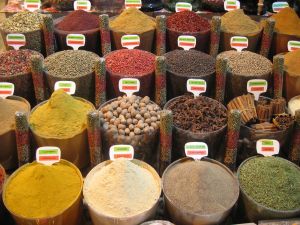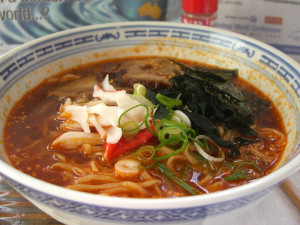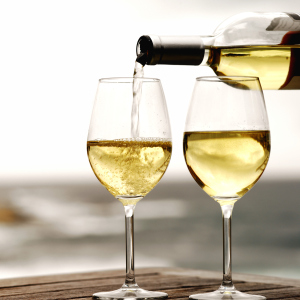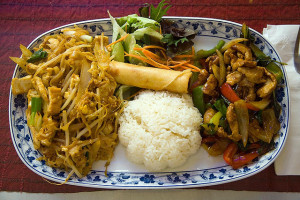 One of the most difficult wine-and-food matches is finding a wine to go with spicy foods, such as curries. Before you start trying, understand the difference between spicy — meaning heavy with spices — and hot and spicy.
One of the most difficult wine-and-food matches is finding a wine to go with spicy foods, such as curries. Before you start trying, understand the difference between spicy — meaning heavy with spices — and hot and spicy.
You don’t have to forget wine while eating a hot ethnic dish. The rules around wine and spicy food have relaxed. It used to be that people would drink anything but wine while eating a hot curry or a spicy chicken slathered in Jamaican jerk sauce. But now even connoisseurs of good taste like “Food and Wine” magazine are featuring stories on what wine to serve with which spicy dish. From Tabasco to Curry, spice comes in a variety of flavors and heat levels.
 But people often have a love or hate relationship with it. Spicy can range from a dish that literally makes you sweat, to one that is enhanced by just a touch of heat. Spices are used all around the world, and while plenty can take the heat, there are some that prefer to get the heck out of the kitchen.
But people often have a love or hate relationship with it. Spicy can range from a dish that literally makes you sweat, to one that is enhanced by just a touch of heat. Spices are used all around the world, and while plenty can take the heat, there are some that prefer to get the heck out of the kitchen.
Many Pan-Asian dishes can be heavily spiced yet not have intense heat. For example, many Indian dishes have pungent aromas and complex flavors, yet are not necessarily hot on the palate. Similarly, Thai cuisine can be intensely flavored, with the heat of the dish dependent on density of the pepper flakes.
 So how to match? Again, start with the heat. If you’re having a high-heat dish, try to go with lower-alcohol wines that have some residual sugar or a perceived sweetness. For example, German Rieslings — specifically from the Mosel-Saar-Ruwer — have very low alcohol levels (as low as 6%), and can simultaneously offer a touch of sweetness. A German wine labeled as “QbA” will give you some perceived sweetness, as will one with “Kabinett” on the label. For a bit more sweetness, move up to a Spatlese. All three are likely to offer a refreshing foil to hot and spicy cuisine. Vouvray (from France) has a similarly fruity, almost-sweet flavor profile, though the alcohol is higher. Grüner Veltliner, from Austria, can also be a good choice, as is Alsatian Gewürztraminer, which has complementary aromas and flavors of litchi and rose petals and can be nearly bone-dry or mildly sweet.
So how to match? Again, start with the heat. If you’re having a high-heat dish, try to go with lower-alcohol wines that have some residual sugar or a perceived sweetness. For example, German Rieslings — specifically from the Mosel-Saar-Ruwer — have very low alcohol levels (as low as 6%), and can simultaneously offer a touch of sweetness. A German wine labeled as “QbA” will give you some perceived sweetness, as will one with “Kabinett” on the label. For a bit more sweetness, move up to a Spatlese. All three are likely to offer a refreshing foil to hot and spicy cuisine. Vouvray (from France) has a similarly fruity, almost-sweet flavor profile, though the alcohol is higher. Grüner Veltliner, from Austria, can also be a good choice, as is Alsatian Gewürztraminer, which has complementary aromas and flavors of litchi and rose petals and can be nearly bone-dry or mildly sweet.
Rosé wines can also be excellent matches, as  most have mild flavors, are lower in alcohol than reds, tend to have a refreshing profile that is similar to white wine, and have enough body and structure to stand up to complex dishes. In addition, many roses have a nice ripe strawberry or watermelon juiciness that resembles hard candy — offering a slight touch of perceived sweetness that foils well against spicy food.
most have mild flavors, are lower in alcohol than reds, tend to have a refreshing profile that is similar to white wine, and have enough body and structure to stand up to complex dishes. In addition, many roses have a nice ripe strawberry or watermelon juiciness that resembles hard candy — offering a slight touch of perceived sweetness that foils well against spicy food.
So when you are deciding what kind of wine you want to pair with spicy dishes, go for white wines with their fruity sweetness or fruity red wines that are low in tannin. The last thing we want is for the wine to hide the spiciness of the meal or for the spiciness of the meal to overpower the taste of the wine.



 0
0